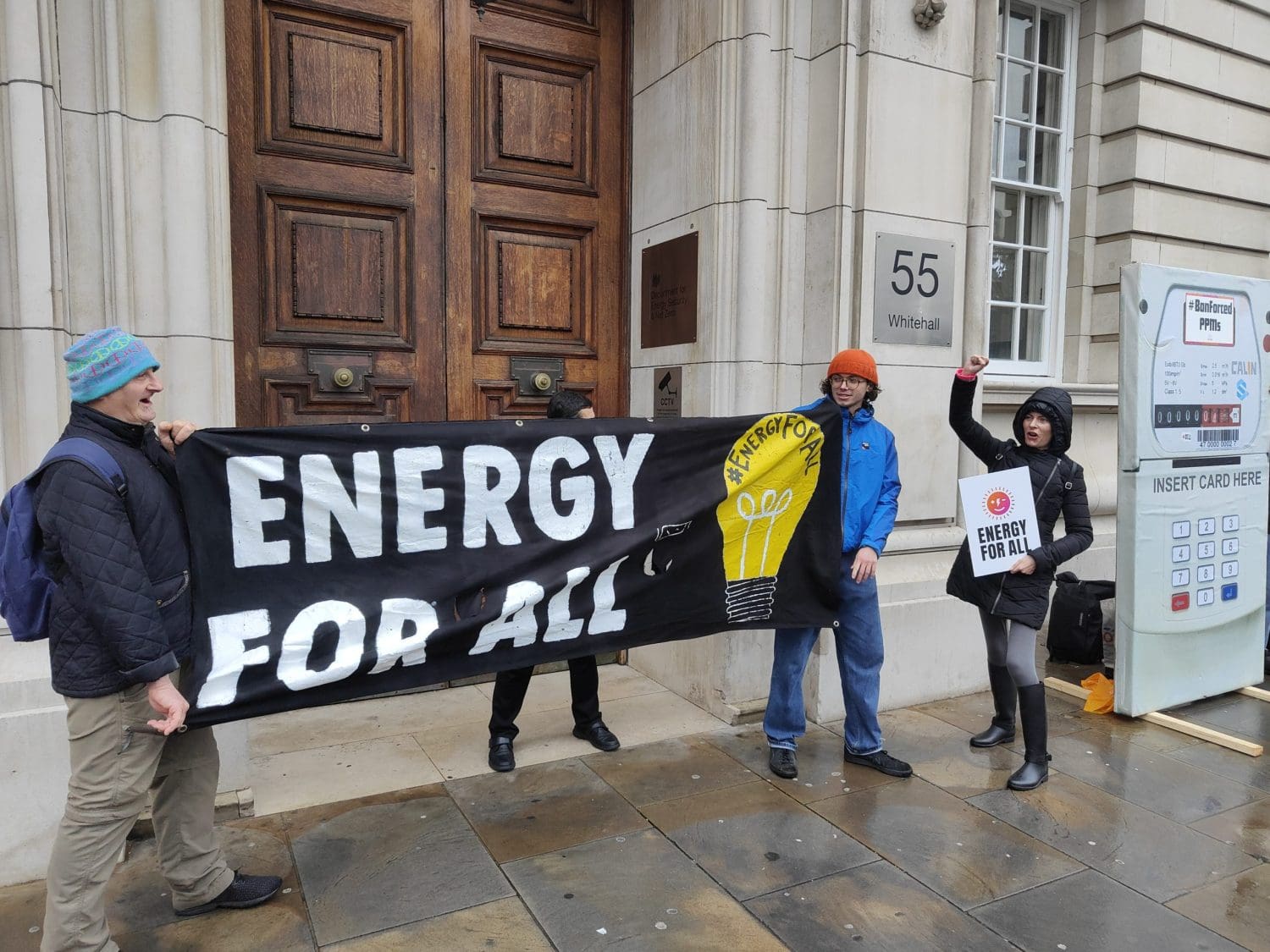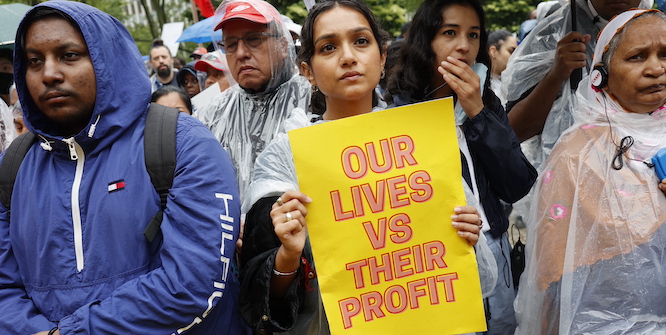Peace. It’s a word that we’ve heard a lot lately.
With the recent outbreak of conflict between Israel and Hamas in Gaza, the ongoing conflict in Ukraine and Russia, the Nagorno-Karabagh conflict between Armenia and Azerbaijan, along with the continued conflict in Syria and Yemen, it’s clear that peace – or the lack of – is a global issue on many people’s minds.
According to research by Institute for Economics & Peace (IEP), the global picture is not looking good.
In their latest global peace report (2023) – in which they provide a review of 163 countries – we saw the “ninth consecutive year that global peacefulness has deteriorated”.
Over the last year, peace decreased by an average of 0.42% per country, with 84 countries marked as more peaceful than in 2022, and 79 countries recording a deterioration of peace.

So, what lies behind the statistics?
Well, improvements and deteriorations were driven by changes a range of overlapping factors, including:
- Conflict: the prevalence of internal and external conflict, along with the number of related deaths
- Politics: the rate of military expenditure (% of GDP), political instability and relations with neighbouring countries
- Displacement: the number of refugees and internally displaced people (IDPs)
- Terrorism: current ranking on the political terror scale and the impact of terrorism
- Weapons: the number of weapons imported and exported
- Crime: the homicide rate and levels of violent crime and access to small arms
In this research, Iceland remained the most peaceful nation (a ranking held since 2008), followed by Denmark and Ireland.
Likewise, Afghanistan remained the “least peaceful nation” for the eighth year in a row, followed by Yemen and Syria.
These are countries that have found themselves in both groupings repeatedly. And with the outbreak of conflict, it’s no surprise.
According to IEP, there have been no changes in the level of global terrorism in the last three years.
Whilst terrorism-related deaths in the MENA region continue to decline (down by 23% in 2023), the largest increase of deaths has been in sub-Saharan Africa, with a rise of 8%.
In fact, the Sahel region of Africa has become the “epicentre of terrorism”.
In this region, 43% of deaths related to global terrorism occur.
Moreover, we’re also seeing the rise in ecological threats and the cyclical relationship to violence, including terrorism and conflict.
Whilst populations are increasing, alongside climate-related disasters and the displacement of people, natural resources are decreasing.
This is and will continue to have a monumental impact on populations, and the level of conflict:
“…without concerted international action, current levels of ecological degradation will substantially worsen, thereby intensifying a range of social issues, such as malnutrition and forced migration.
Current conflicts will escalate and multiply as a result, creating further global insecurity.
IEP estimates that by 2050, 2.8 billion people will reside in countries facing severe ecological threats, compared to 1.8 billion in 2023, with 1.1 billion of these people living in countries with low societal resilience.”
IEP, Ecological Threat Report (2023)
As communities are becoming increasingly displaced and lacking in critical resources, conflict and instability will inevitability increase.
The reality is this: if we want peace, we need to focus on more than ending conflict and violence (what’s known as “negative peace”).
Instead, we need a local, national and international effort towards “positive peace” – a holistic sustainable effort to prevent (rather than respond to) conflict.
For positive peace, we need:
- Well-functioning governments
- Equitable distribution of resources
- Free flow of information
- Good relations with neighbours
- High levels of human capital
- Acceptance of the rights of others
- Low levels of corruption
- Sound business environments
Source: IEP, Pillars of Peace Report (2015)
To do this, we must build egalitarian resilient communities and transparent, accountable nations to collaborate on a global scale.
In short, if we want peace, we need to help communities thrive.
We have to tackle the rise of global terrorism, address the rise in climate change, promote intercommunal dialogue, address poverty and inequality – including gender inequality – and work on all levels.
This includes engaging at grassroots (community) level, with civil societies (expert organisations) and governmental and intragovernmental powers, to drive critical change.
Of course, this requires holistic change globally. And change starts with us!
Whatever our background, we can all make a difference.
How? Read on to find out!
1. Develop dialogue and human rights frameworks

Inter-communal dialogue based on common shared values (our shared humanity!) is critical in building stronger relationships in our communities, regions, nations and globally.
Working across religious and cultural divides by communicating with each other and carving shared spaces, we build a common sense of citizenship to come together and prevent conflict when disagreements and tensions rise.
By understanding individuals and communities’ diverse needs, we can better understand different lived experiences and carve more equitable spaces.
Promoting diversity and inclusion, and ensuring a broader sense of identity and citizenship, we can fight exclusion and develop the tools and understanding to prevent and respond to disagreements and larger-scale conflict:
“For decades the fields of conflict resolution, mediation and peace studies had been overlooking the positive political role that religion could play in all stages of peacebuilding.
Today there is growing attention to the contribution that religious peacebuilding can make to the stability, security, and justice of many divided societies around the world… through political application of religious ideals like reconciliation, forgiveness and mercy.”
Italian Institute for International Political Studies (2023)
We therefore need to amplify the role of intercommunal dialogue – including interfaith and intercultural dialogue – to unite among shared values, against (perceived) notions of difference.
These values however must lie within a framework of human rights (shared dignity and humanity).
In this way, we can build a mutual foundation of common values and unite to promote diversity (amongst all faiths and none).
We can therefore critically understand and promote the mutual rights of each and every one of us when building initiatives, policies and projects.
We can also confidently in collaboration reject harm, respecting and promoting cultural and religious diversity.
In this way, we can confidentially counteract religious extremism and harmful socio-cultural norms together, ensuring that we do not excuse harm under extreme variations of cultural relativism.
Take action:
Develop dialogue:
Start your own interfaith/intercultural dialogue journey today, with some key tips here.
Local, regional, national or international, the sky’s your limit!
Plus, if you’re already a keen dialogue practitioner, why not apply for the KAICIID fellowship programme in intercultural and interreligious dialogue to expand your networks, resources and knowledge?
Keep an eye out on their website for submission deadlines.
Promote anti-radicalisation:
Challenge hatred and extremism where you encounter it (when safe to do so).
Spread a counternarrative by promoting dialogue and humanism in religion, challenging dogmatism and extremism.
Create positive communities, talk with others inside and outside of the community, and speak out against hate.
Critically: report hate to relevant organisations and authorities (find out more here)
Support dialogue in peacebuilding:
Check out these great organisations working for peace in Israel-Palestine and support their crucial work through advocacy and fundraising.
Wherever your interest lies, we part of a positive solution!
Share positive stories, meet new people and promote peace not division
Promote human rights and peace education:
Promote the importance of human rights in practice, not just theory!
Expand your knowledge in human rights (perhaps by taking a course) and incorporate human rights into your work (implementing policies based on equity, inclusivity and no harm).
Why not also consider becoming and IEP ambassador?
Dialogue is a key step to preventing conflict, with human rights building a key common framework of equality, justice and human dignity.
2. Challenge corruption and promote transparency

Bribery, nepotism, corruption are the anthesis to sound business, equity and well-functioning governments – and to peace:
“Corruption harms the poor and vulnerable the most, increasing costs and reducing access to basic services, such as health, education, social programs, and even justice.
It exacerbates inequality and reduces private sector investment to the detriment of markets, job opportunities, and economies.
Corruption can also undermine a country’s response to emergencies, leading to unnecessary suffering and, at worst, death.
Over time, corruption can undermine the trust and confidence that citizens have for their leaders and institutions, creating social friction and in some contexts increasing the risk of fragility, conflict, and violence.”
Ousmane Diagana and Mouhamadou Diagne, World Bank (2023)
So, to tackle the issue of global poverty, inequity of systems and to drive real change, we need accountancy, transparency, development and growth.
This requires action across society, on all levels.
We need to call businesses to account for how they treat their employees.
We need to ensure that governments are investing money where they should be, that justice systems are fit for purpose and that grassroots communities are able to protect the most vulnerable people in our societies.
This includes people at increasing risk of modern slavery and displacement (see point #3) and gender-based violence (see points #3 and #4) as poverty and inequality meet the increasing drivers of climate change (see point #3) – amongst various other phenomenon.
It’s a task of monumental scale, but we can’t just sit back and do nothing.
Here’s how we can start.
Take action:
Call for accountability:
Report corruption wherever you see it. Call for investigations amid the misuse of power and the abuse of systems – be it locally, nationally or internationally.
Call people and systems to account. Report, fight and expose
Model the change:
Be the change in your own networks.
Whatever your work, position or line of work, ensure your systems are fair, transparent and open to feedback (as well as legally compliant!)
Support workers’ rights:
Promote responsible business and workers rights.
Spot the signs and report modern slavery.
Call businesses to account, join and support vital trade unions and lobby governments to promote equality and transparency
Get politically engaged:
Use your voice! Vote, stand for power, challenge leaders and volunteer at polling stations
Key drivers of conflict are poverty and inequality which thrive in corrupt environments.
Change – and the scale of the problem – is of course contextual (as is the level of risk).
We can all start with ourselves, modelling the change we can see.
Locally, regionally, nationally, internationally, there is a lot of work to be done! But please, keep safe.
3. Call for global action against climate change

The impact of increasing climate change is devastating to both people and planet.
As the planet’s temperature is rising, so too is the frequency of climate induced disasters such as floods and droughts.
And this is having a monumental impact on communities worldwide – in particular the world’s most vulnerable.
In 2022 alone, a staggering 32.6 million people were displaced as a result of disasters.
98% of these were weather-related, such as floods, storms, wildfires and droughts.
And these are increasing the impact of poverty and risk of conflict.
As crops fail, livestock perish and people lose their livelihoods and homes, families and communities are left displaced – in search of food, shelter and work.
Such disasters/climatic changes aren’t a one off, they act as a “threat multiplier”:
“Not only did climate-related disasters trigger more than half of new reported displacements in 2022, but nearly 60 per cent of refugees and internally displaced people now live in countries that are among the most vulnerable to climate change.”
UNHCR (2023)
Communities already affected by poverty are facing greater vulnerability to abuse and harm such as:
- Modern slavery and human trafficking: forced labour, child/forced marriage and bonded labour
- Gender-based violence: child and forced marriage, sexual violence and exploitation
- Ill health and death: malnutrition and contracting water-borne, food-borne and vector-borne diseases
With tensions around dwindling resources rising, conflict and displacement are increasingly occurring.
That’s why we need to tackle climate change to not only protect the planet, but to also promote peace.
Take action:
Make personal changes:
Cut your impact on the planet by changing in your consumption habits, for example:
- Use less plastic:
Switch to using a reusable (metal) water bottle, plastic-free food containers and toiletries.
Re-use any plastic containers you do have for food or toiletries, rather than throwing them away
- Pollute less:
Swap your car for public transport, walk more (and get a work out) and limit your air miles where possible by choosing trains and ferries
- Consume less:
Consume less meat and dairy, recycle rubbish at home and work and compost organic waste and try thrifting.
Why not also try vintage shops and apps when you want to have a clear out or add something to your wardrobe?
Discover more top tips here and here!
Call on leaders to take action:
COP 29 is taking place in November 2024.
Get ready to increase the pressure.
Add your name to petitions, join a campaigning group and get your voice out there on social media.
Demand to see what action global leaders are taking to stem the rise of climate change and to support those most affected/at risk.
Support climate action projects:
Check out specialist organisations, such as Climate-Network International, to find out how you can make a critical difference.
Fund climate-resilient projects:
Support community-resilience programmes which help individuals and families to:
- adopt climate-resilient livelihoods
- access safe sustainable sources of water
- build food security to prevent malnutrition
This will help communities to fight the effects of climate change, decreasing the rate of displacement, scarcity of resources, and ultimately conflict.
Climate change is about both the planet and people – and stemming the effects are critical to building and maintaining peace.
4. Fight global gender-based inequality

Where poverty thrives and crisis hits, women are worst affected.
In any crisis (be it climate-related and/or conflict-related) – women and girls are always disproportionately affected.
At increasing risk of sexual violence, human trafficking and forced marriage (including child marriage), in times of conflict:
- Teen girls are 90% more likely to be out of education
- 70% of women will experience gender-based violence
This however, simple falls in line with overall trends on gender inequality across the board.
How?
Well, women and girls worldwide are already more likely than their male counterparts to:
- Live in poverty and earn less
- Be illiterate / out of education
- Experience sexual violence
- Excluded from decision making
- Be married as a child
We also know that when women are involved in peacekeeping efforts, peace is more likely to be sustainable:
“Female participation in both conflict prevention and conflict resolution enhances security interests.
Studies have found that a significant inclusion of women and civil society groups in a peace negotiation makes the resulting agreement 64% less likely to fail and 35% more likely to last at least fifteen years.
…full and meaningful participation of women in peace operations broadens the perspective on conflict management, allows for more inclusive political resolutions, and, in the end, improves international peacebuilding strategies…”
Eric Rudberg, Women in International Security (2023)
So, when it comes to positive peace (preventing conflict) – we need to dismantle the political, social, cultural, religious and economic barriers that discriminate women and harm society as a whole.
These are barriers that both limit women’s participation in conflict prevention/resolution and also result in a disproportionate impact on conflict on women and girls in crisis situations (pre-, mid and post-conflict).
Take action:
Support education for women and girls:
Education is crucial for fighting the duality of poverty and gender inequality.
Women with an education are less likely to fight poverty (see point #5), and have greater means to leave abusive relationships.
When girls go to school, they’re building their future and fighting illiteracy, poverty and harmful practice such as child marriage.
Differently abled girls, menstruating girls and girls in rural communities all need access to quality education – which requires not just a change in attitudes, but the right resources.
Pledge your support here
Challenge harmful norms and practices:
Stand up against the social, cultural, religious and cultural norms that stigmatise and exclude women and girls from education, income-generation, community building and decision making.
From period shaming, victim-blaming of survivors of assault, exclusion of women from religious spaces and unfair burden of caring/household responsibilities, women and girls are denied the right to participate and contribute equally to build safer more equal societies.
Find out more and speak out today!
Support projects against gender-based violence:
Abusive practices such as child/forced marriage and Female Genital Mutilation (FGM) deny women and girls the right to education, health (even life), sexual pleasure, bodily autonomy and freedom of choice.
They perpetuate misogynistic attitudes harmful to women and girls and to society as a whole.
Speak out, stand up and support crucial projects, such as Grandmother Project who are critically fighting FGM and promoting girls’ education
Empower women financially:
Help women to empower themselves financially by supporting microfinance projects, enabling them to fight the effects of gender-based inequality, challenge gender-based discrimination/harmful norms and stand up in their communities and societies.
This will ultimately help develop more inclusive peaceful societies for all.
Find out more here.
Finally, call on your MP to ensure that the UK government puts gender at the heart of crisis-responsive policies.
5. Take action against poverty

As we’ve already seen, if we want to build peace and prevent conflict, we need to fight corruption, to work to ensure the mutual respect of human rights and to fight gender inequality and the increasing impact of climate change.
And so, a huge factor is also: fighting poverty.
Why?
Because poverty is a major driving factor behind the prevalence of harmful gender-based norms (see point #4), ill health and the exclusion of people in decision making and civil society.
Individuals and communities living in poverty are also further disproportionally affected by the increasing effects of climate change and risk of displacement (see point #3).
Taking also these factors into account, we’re left seeing the increased risk of conflict .
And of course, the further exclusion of women (see point #4) (remembering that women are also in fact key to building inclusive sustainably peaceful environments in pre and post-conflict rebuilding processes).
Poverty is complex, yet key part of the solution:
“…extreme poverty is … increasing in countries affected by fragility, conflict and violence (FCV)…by 2030, up to two thirds of the world’s extreme poor will live in these situations.
These challenges threaten to reverse efforts to end extreme poverty, and they affect both low- and middle-income countries…
Violent conflict has spiked dramatically since 2010 — conflicts now drive 80% of all humanitarian needs and reduce gross domestic product (GDP) growth by two percentage points per year…
Social and economic exclusion, climate change, gender and other inequalities, demographic challenges, illicit financial flows and other global trends contribute to this complexity.”
World Bank, People, Peace, Prosperity (2020)
It’s fundamentally clear that if we want to prevent conflict, we need to fight poverty.
And if we want to fight poverty, we need to fight conflict.
Communities need equitable, inclusive, safe and thriving societies to build and promote dialogue, stem the effects of climate change, fight corruption and ultimately prevent conflict.
Take action:
Challenge discrimination:
Speak out against the discrimination which traps people in poverty, makes them vulnerable to radicalisation and/or recruitment in armed groups, and builds tension in communities (see sections #1 and #2).
Keep refugee children in education:
Nearly half of school-aged refugee children are not in school.
Donate towards, volunteer with or share information at projects supporting refugee children’s education to help these children get the critical education every child needs and help break the cycle of poverty.
Prevent the recruitment of child soldiers:
Poverty and lack of opportunities are major drivers behind the recruitment of child soldiers.
Help end this abuse by supporting dedicated work to prevent the recruitment of child soldiers by strengthening child protection systems, promoting peacebuilding and increasing access to education and work opportunities.
Fight food poverty:
In times of crisis, food insecurity increases the risk of violence towards those who produce food.
When communities don’t have adequate access to food, they face ill health and will struggle with accessing work and education.
Fighting food poverty is therefore one step to creating more participatory societies.
Donate to food projects, set up your own and speak to political leaders about food poverty in your locality
We also need to:
- Tackle the attitudes behind gender-based discrimination and violence (see section #4)
- Promote and support education (for children and adults) and livelihoods/business (see section #4)
- Protect workers rights (see section #2)
- Fund climate-resilience projects (see section #3)
In this way, we can tackle the cycle and roots causes of poverty and inequality which make individuals and communities vulnerable to conflict.
Peacebuilding is an ongoing process. A process that we need to be active in building and sustaining.
As a planet, we need to look beyond non-violence, towards wider building positive peace globally.
This means going beyond the idea of simply a “lack of violence” (known as “negative peace”).
Instead, real sustainable peace (“positive peace“) means developing and strengthening societies based on mutual dialogue, equity, diversity and inclusion.
Higher levels of peace have been proven to lead to:
- Stronger resilience and adaptability
- Better environmental outcomes
- Higher measures of wellbeing
- Better performance on development goals
- Higher income per capita
- Better business environments
(Source: IEP, 2023)
Most critically however, positive peace exists in societies that are more just and are fairer.
These are societies which should have the critical tools, resources and systems in place to embrace pluralism, promote equity and therefore de-escalate potential conflict.
From breaking the gender bias, supporting displaced communities and fighting for people and planet, we can all make a difference on many levels.
Whether locally, nationally or internationally, through your work, volunteering or simply in your day-to-day life, the time is now!
Plus, don’t forget we’ve got the world at our digital fingertips!
Be part of the change. Today.
Credits:
This blog was produced inline with participation requirements on the IEP Ambassador Programme (2023).

The Institute for Economics & Peace (IEP) is an independent, non-partisan, non-profit think tank dedicated to shifting the world’s focus to peace as a positive, achievable, and tangible measure of human well-being and progress. We aim to create a paradigm shift in the way the world thinks about peace.

This post was originally published on Voice of Salam.

 Saturday 2nd December 2023
Saturday 2nd December 2023 

 Time for this government to pay its debts!
Time for this government to pay its debts!
 Join us
Join us 



